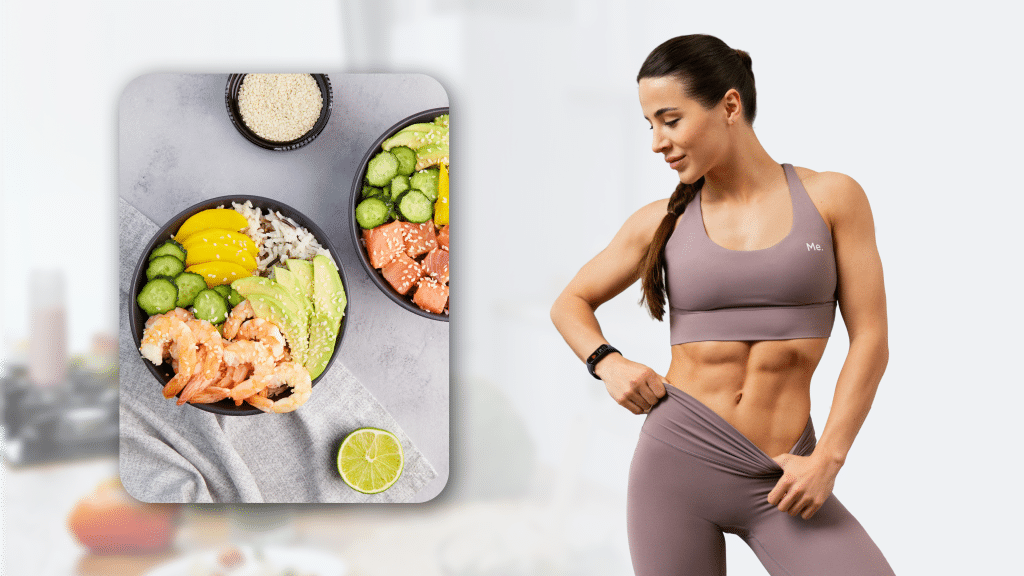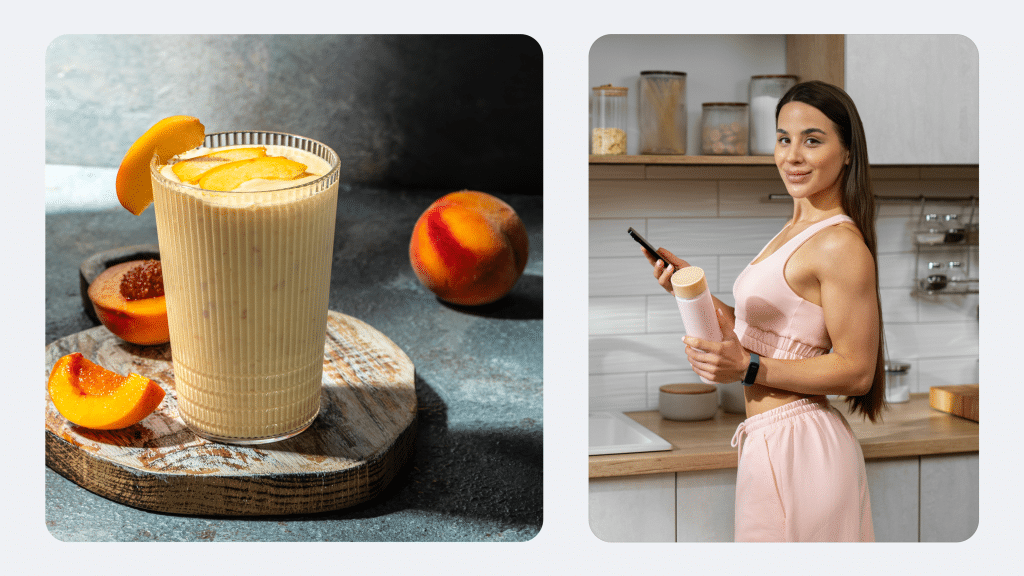Protein plays a vital role in our daily lives, serving as the building blocks for our body’s cells, tissues, and organs.
With various types of protein available, including plant-based and animal-derived options, it can be challenging to determine which source is the most effective for your health and fitness goals. Whey protein has emerged as a popular choice due to its high-quality amino acid profile and rapid absorption rate, making it ideal for supporting muscle growth and recovery.
In this comprehensive guide, we’ll explore the top 10 whey protein foods that provide optimum nutrition and enhance physical performance.
By incorporating these whole food sources into your diet, you can experience the benefits of whey protein while enjoying delicious and diverse meal options.
What Is Whey Protein?
Whey protein is a high-quality protein that is derived from milk during the cheese-making process. Milk contains two primary types of proteins: casein (80%) and whey (20%).
When milk is coagulated to form cheese, the liquid that separates from the solid curds is called whey. This liquid is then processed and purified to extract whey protein in various forms, such as concentrate, isolate, and hydrolysate.
Whey protein is considered a complete protein as it contains all nine essential amino acids required for optimal human health. These amino acids are essential for various bodily functions, including muscle growth, repair, and maintenance (12).
In addition, whey protein is rich in branched-chain amino acids (BCAAs) – leucine, isoleucine, and valine – which may play a vital role in promoting muscle protein synthesis and recovery after exercise (12).
One of the reasons whey protein is highly regarded is its rapid absorption rate. This fast-digesting protein makes it an ideal choice for post-workout nutrition, as it quickly delivers the necessary nutrients to muscles when they need them most.
Whey protein has also been associated with numerous health benefits beyond muscle development. These include supporting weight management by increasing satiety, enhancing immune function through the presence of bioactive compounds, and promoting heart health by reducing blood pressure and cholesterol levels (13).
What Foods Have Whey Protein?
Natural whey protein foods include dairy-based items, with some of the highest concentrations found in whole milk, Greek yogurt, ricotta cheese, and cottage cheese. These contain approximately 11-15 grams of protein per cup and are a great source of natural whey.
However, many individuals prefer to avoid dairy or are intolerant to it, which makes other whey-based food sources more suitable, as long as they don’t have an allergy to cow’s milk protein. Fortunately, there are plenty of foods that are high in whey protein, including powders, bars, and shakes.
Below is a list of the 10 best whey protein foods you can include in your diet:
Milk
As the primary source of whey protein, milk naturally contains a small percentage (approximately 20%) of whey in its protein composition. Consuming milk provides whey protein and essential nutrients such as calcium, vitamins A and D, and healthy fats (8).
Yogurt
Made from fermented milk, yogurt is another excellent source of whey protein. Greek yogurt, in particular, contains higher protein content due to its thicker consistency and strained processing method, which makes it a popular choice for a protein-rich snack.
Whey Protein Foods: Cottage Cheese
This soft, fresh cheese is a byproduct of the cheese-making process and retains a significant amount of whey protein. In addition to its high protein content, cottage cheese is low in fat and calories, which makes it a nutritious option for those who are looking to increase their protein intake.
Ricotta Cheese
Unlike most cheeses, ricotta is made by coagulating the whey that is left over from cheese production. This results in a creamy, slightly sweet cheese that’s rich in whey protein and other essential nutrients such as calcium and phosphorus.
Whey Protein Powder
Available in various forms, such as concentrate, isolate, and hydrolysate, whey protein powder is a convenient and highly concentrated source of whey protein. It can easily be added to smoothies, shakes, or recipes to boost the protein content.
Protein Bars
Many protein bars on the market use whey protein as their primary protein source. These bars offer a convenient, portable option to increase your protein intake while on the go.
Protein-Fortified Baked Goods
Some bakeries and food companies use whey protein as an ingredient in their bread, muffins, and other baked goods to increase the protein content. This allows consumers to enjoy their favorite treats while still getting a dose of high-quality protein.
Whey Protein-Fortified Cereals
Some breakfast cereals are fortified with whey protein, meaning that they provide a nutritious and protein-packed start to the day. You should always check the label to ensure the cereal contains whey protein and not just added protein from other sources.
Protein-Enhanced Beverages
Certain ready-to-drink beverages, such as protein shakes and smoothies, contain whey protein as a primary ingredient. These beverages offer a convenient way to consume whey protein when you’re short on time or need a quick post-workout recovery drink.
Meal Replacement Shakes
Meal replacement shakes often use whey protein as a key component to provide balanced nutrition in a convenient form.
These shakes are designed to replace one or more meals per day, offering a combination of protein, carbohydrates, fats, vitamins, and minerals for a well-rounded meal option.
Whey Protein Foods: Does Cheese Have Whey?
Cheese is primarily made from casein, which is the predominant protein that is found in milk. During the cheese-making process, milk is coagulated, which causes the casein proteins to form solid curds. The liquid that separates from these curds is called whey.
While most of the whey is removed during cheese production, trace amounts of whey protein may still be present in the final cheese product.
However, ricotta cheese is an exception.
Ricotta is made by coagulating the whey that is left over from the production of other cheeses, which results in a cheese that is predominantly composed of whey protein. However, cheese is generally considered a casein-rich food rather than a significant source of whey protein.
What Foods Contain Whey and Casein?
Whey and casein are the two primary types of protein that are found in milk, with casein accounting for approximately 80% and whey making up the remaining 20%. Both proteins are high-quality, complete proteins that contain all nine essential amino acids required for human health (8).
However, they differ in terms of their absorption rates and digestion times. Casein is a slow-digesting protein that forms a gel-like substance in the stomach and provides a sustained release of amino acids over time (9).
At the same time, whey is a fast-digesting protein that is rapidly absorbed into the bloodstream, quickly delivering amino acids to muscles (9).
Foods that contain both whey and casein proteins are primarily dairy-based products, as they’re derived from milk.
Here’s a list of such foods:
Milk
As a source of both whey and casein proteins, milk is a natural choice for those who are looking to consume these proteins together.
Yogurt
Yogurt contains a mix of whey and casein proteins, with the exact ratio depending on the specific type of yogurt (e.g. Greek yogurt typically has a higher casein content).
Cottage Cheese
This fresh cheese is made from the curds of cow’s milk, which contain both whey and casein proteins. The liquid portion (whey) is partially drained and leaves behind a product that is rich in casein with some residual whey protein.
Cheese
Most varieties of cheese contain both whey and casein proteins, although the amounts may vary depending on the type of cheese and the production process. Cheese is generally considered a casein-rich food with trace amounts of whey protein.
Quark
A soft, fresh cheese similar to cottage cheese, quark contains both whey and casein proteins. It’s popular in European cuisine and can be used in both sweet and savory dishes.
Kefir
This fermented milk drink contains both whey and casein proteins, along with probiotics, which promote gut health (5).
By consuming a combination of these dairy products, you can benefit from the unique properties of both whey and casein proteins, such as rapid absorption for post-workout recovery (whey) and sustained amino acid release for muscle maintenance (casein) (12).
However, it’s important to consider individual dietary needs and preferences when incorporating these foods into your diet.
What Are Some Whey Protein Dangers?
While whey protein is generally considered to be safe for most individuals, there are potential dangers and side effects that are associated with its consumption, particularly when taken in excessive amounts or by individuals with specific health conditions.
Here are some potential dangers related to whey protein intake:
Allergies and Intolerances
Some people may be allergic or intolerant to milk proteins, including whey. Consuming whey protein in such cases can lead to symptoms such as hives, itching, swelling, difficulty breathing, gastrointestinal issues, and in severe cases, anaphylaxis (10).
Lactose Intolerance
Whey protein concentrate contains some lactose, a sugar that is found in milk. Individuals with lactose intolerance may experience bloating, gas, diarrhea, and abdominal pain if they consume whey protein concentrate (7).
However, lactose-intolerant individuals can often tolerate whey protein isolate or hydrolysate, which contain little to no lactose.
Kidney Health
Excessive protein intake, including whey protein, can put a strain on the kidneys and increase the risk of kidney damage, particularly in individuals with pre-existing kidney conditions (4).
It’s important to consult a healthcare professional before you consume high amounts of whey protein if you have a history of kidney issues.
Liver Health
Similar to kidney health, excessive protein intake can potentially strain the liver, particularly in those with pre-existing liver conditions (2). It’s essential to consult a healthcare professional before you consume large amounts of whey protein if you have a history of liver problems.
Bone Health
There’s some debate about whether high protein intake, including whey protein, can lead to calcium loss and negatively impact bone health.
While some studies have suggested a link between high protein consumption and increased calcium excretion, others have found there to be no significant impact on bone health (2).
Moderation and balance in protein intake, along with adequate calcium and vitamin D consumption, are essential for maintaining bone health (3).
Whey Protein Foods: Nutrient Imbalance
Too much reliance on whey protein supplements can lead to an imbalance in nutrient intake, as these supplements may displace other nutrient-dense whole foods in the diet.
It’s important to maintain a balanced diet that includes a variety of protein sources, fruits, vegetables, whole grains, and healthy fats.
Can You Use Whey Protein Foods to Lower Cholesterol?
While whey protein isn’t specifically targeted to lower cholesterol, there is evidence that suggests it may have a positive impact on cholesterol levels and overall heart health.
Several studies have shown that consuming whey protein can help reduce total cholesterol and LDL (low-density lipoprotein) cholesterol, which is often referred to as “bad” cholesterol.
A study published in the American Journal of Clinical Nutrition found that participants who consumed whey protein had a significant reduction in total cholesterol, triglycerides, blood pressure, and other markers of cardiovascular health compared to those who consumed casein protein or a carbohydrate-based supplement (11).
The researchers suggested that the bioactive components in whey protein, such as lactoferrin and immunoglobulins, may contribute to its cholesterol-lowering effects (11).
A meta-analysis published in the journal Lipids in Health and Disease found that whey protein supplementation significantly reduced total cholesterol, LDL cholesterol, triglycerides, and the ratio between LDL and HDL (high-density lipoprotein) cholesterol, which is also known as “good” cholesterol, in overweight and obese individuals (6).
It’s important to note that these studies focused on whey protein supplements rather than whole foods containing whey protein.
However, incorporating whey protein-rich foods into a balanced diet that includes other heart-healthy foods, such as fruits, vegetables, whole grains, and healthy fats, may also contribute to overall cardiovascular health and potentially help lower cholesterol levels (1).
While whey protein may have some cholesterol-lowering effects, it should not be solely relied upon for reducing cholesterol levels.
It’s important to maintain a balanced diet, participate in regular physical activity, and consult a healthcare professional for personalized advice on managing cholesterol and maintaining heart health.
FAQs
Is whey protein good or bad for you?
Whey protein is generally considered to be beneficial for most people, particularly those who are involved in physical activities such as bodybuilding, weightlifting, or endurance sports. It’s a complete protein, which means that it contains all nine essential amino acids necessary for muscle repair and growth. Studies have shown that whey protein can help increase muscle mass, improve strength, and help with recovery post-exercise. In addition, it can help with weight loss by promoting satiety and boosting metabolism (14).
However, there are also potential downsides. Some individuals may experience digestive issues, such as bloating, gas, or lactose intolerance. Excessive consumption can lead to kidney strain, particularly in people with pre-existing kidney conditions. Furthermore, not all whey protein supplements are created equal; some may contain additives, artificial sweeteners, and other undesirable ingredients. It’s important to choose high-quality, minimally processed whey protein and consume it in moderation as part of a balanced diet.
What is the number 1 whey protein?
Determining the “number 1” whey protein is subjective and depends on a variety of factors. The first is to check for its high-quality protein content, which includes whey protein isolates and concentrates. Another aspect to consider is whether the product is well-regarded for its mixability, the range of flavors it has, and how low the fat and carbohydrate contents are. The product should have a reputation for quality and effectiveness, which can be assessed through positive reviews and recommendations by fitness professionals and dietitians.
In addition, it’s best to find out whether the brand performs rigorous third-party testing to ensure purity and absence of banned substances. Ultimately, the best whey protein for an individual may vary based on personal dietary needs, taste preferences, and specific health goals.
How can I make 100% whey protein at home?
Making 100% whey protein at home involves separating the whey from milk and processing it to create a powder. Start by heating whole milk until it reaches 180°F, then add an acidic substance such as lemon juice or vinegar to curdle it. Once the curds (solid) and whey (liquid) have separated, strain the mixture using a cheesecloth to collect the whey. The liquid whey can then be dehydrated using a dehydrator or a very low-temperature oven to remove the water content.
Once fully dehydrated, the whey can be ground into a fine powder using a food processor or blender. While this method allows you to create whey protein at home, it’s important to note that the protein concentration and purity may not match that of commercially produced whey protein powders, which undergo more sophisticated filtration processes such as microfiltration or ultrafiltration to isolate the protein and remove fats and lactose (15).
What is the healthiest form of whey protein?
The healthiest form of whey protein is generally considered to be whey protein isolate. Whey protein isolate undergoes additional processing to remove most of the fats and lactose, which results in a product that is 90% or more protein by weight. This makes it an excellent choice for those who are lactose intolerant or looking to minimize their intake of fats and carbohydrates (16).
It’s also low in calories while still providing all the essential amino acids that are necessary for muscle repair and growth. Whey protein isolate is also typically free from additives and artificial ingredients, which makes it a purer option compared to some other protein supplements. Another form, whey protein hydrolysate, is pre-digested for faster absorption but can be more expensive and less palatable.
The Bottom Line
Incorporating whey protein-rich foods into your diet can significantly contribute to optimum nutrition and performance. From dairy products such as milk and yogurt to fortified cereals and protein bars, these top 10 whey protein foods provide a convenient and delicious way to fuel your body and support muscle recovery and growth.
DISCLAIMER:
This article is intended for general informational purposes only and does not serve to address individual circumstances. It is not a substitute for professional advice or help and should not be relied on for making any kind of decision-making. Any action taken as a direct or indirect result of the information in this article is entirely at your own risk and is your sole responsibility.
BetterMe, its content staff, and its medical advisors accept no responsibility for inaccuracies, errors, misstatements, inconsistencies, or omissions and specifically disclaim any liability, loss or risk, personal, professional or otherwise, which may be incurred as a consequence, directly or indirectly, of the use and/or application of any content.
You should always seek the advice of your physician or other qualified health provider with any questions you may have regarding a medical condition or your specific situation. Never disregard professional medical advice or delay seeking it because of BetterMe content. If you suspect or think you may have a medical emergency, call your doctor.
SOURCES:
- A Clinician’s Guide to Healthy Eating for Cardiovascular Disease Prevention (2019, nih.gov)
- Adverse Effects Associated with Protein Intake above the Recommended Dietary Allowance for Adults (2013, nih.gov)
- Bone Health (2009, nih.gov)
- Dietary protein intake and renal function (2005, nih.gov)
- Effects of probiotics on gut microbiota: mechanisms of intestinal immunomodulation and neuromodulation (2013, nih.gov)
- Effects of whey protein on glycemic control and serum lipoproteins in patients with metabolic syndrome and related conditions: a systematic review and meta-analysis of randomized controlled clinical trials (2020, nih.gov)
- Lactose Intolerance (2023, clevelandclinic.org)
- Milk (n.d., betterhealth.vic.gov.au)
- Milk proteins: Processing, gastric coagulation, amino acid availability and muscle protein synthesis (2022, tandfonline.com)
- Protein Intolerance (2023, nih.gov)
- Whey protein lowers blood pressure and improves endothelial function and lipid biomarkers in adults with prehypertension and mild hypertension: results from the chronic Whey2Go randomized controlled trial (2016, oup.com)
- Whey Protein Supplementation Enhances Whole Body Protein Metabolism and Performance Recovery after Resistance Exercise: A Double-Blind Crossover Study (2017, nih.gov)
- Whey Protein Supplementation Improves Body Composition and Cardiovascular Risk Factors in Overweight and Obese Patients: A Systematic Review and Meta-Analysis (2017, pubmed.gov)
















